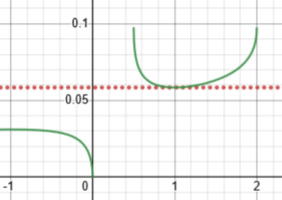m.alimohammadi.stat
New member
- Joined
- Jul 30, 2023
- Messages
- 3
Dear All
Can you prove the following inequality when 0<a<b<1 for any c>=1 ?
(sqrt(1-a)-sqrt(1-b))^2 >= (sqrt(1-a/c)-sqrt(1-b/c))*(sqrt(1-a*c)-sqrt(1-b*c)).
Thanks in advance
Can you prove the following inequality when 0<a<b<1 for any c>=1 ?
(sqrt(1-a)-sqrt(1-b))^2 >= (sqrt(1-a/c)-sqrt(1-b/c))*(sqrt(1-a*c)-sqrt(1-b*c)).
Thanks in advance

